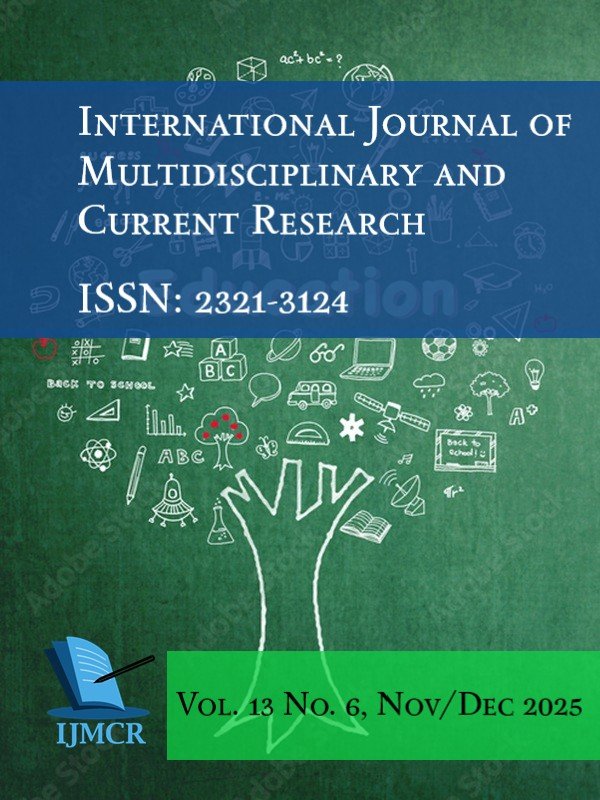About the Journal
Aim and Focus: The International Journal of Multidisciplinary and Current Research (IJMCR) is Peer Reviewed and Refereed Journal and serves as a high-quality global forum for researchers, practitioners, and students to showcase the most current and cutting-edge advancements in a broad spectrum of disciplines. The journal's primary aim is to break down academic silos and foster interdisciplinary dialogue by publishing work that connects theory and practice across traditionally separate fields.
Journal Details
International Journal of Multidisciplinary and Current Research
ISSN: 2321-3124
Frequency: Bimonthly: Jan/Feb, Mar/Apr, May/Jun, Jul/Aug, Nov/Dec
Email: editor@ijmcr.com
Google Scholar Indexing: Citations-3942, h-index-27, i10-index-109
Scope of Coverage: As a truly multidisciplinary journal, IJMCR welcomes submissions from, but not limited to, the fields like Science and Technology, Engineering, Computer Science, Information Technology, Environmental Science, Applied Mathematics, and Physics. Health and Life Sciences, Medicine, Biotechnology, Pharmacy, Nursing, Public Health, and Agricultural Sciences. Business and Management, Finance, Marketing, Human Resource Management, Organizational Behavior, and Economics. Arts, Humanities, and Social Sciences: Education, Law, Political Science, Sociology, Psychology, Linguistics, and Cultural Studies. Types of Articles Accepted The journal accepts various manuscript types that reflect original and current work: Original Research Papers: Full-length articles presenting novel empirical data and significant theoretical contributions. Review Articles: Comprehensive, critical, and objective analyses of the existing literature on a subject. Case Studies: Detailed reports on real-world issues, practices, or experiences in any field. Short Communications: Brief reports on significant, timely findings that require rapid publication.
Key Commitments: Global Reach: The journal maintains an international perspective, welcoming submissions and catering to an audience from all corners of the world. Current Relevance: A strong emphasis is placed on research that addresses contemporary global issues, emerging trends, and recent developments across various disciplines. Quality Assurance: All submitted manuscripts undergo a rigorous double-blind peer-review process to ensure the highest standards of academic validity, originality, and excellence.
Current Issue
Vol. 13 No. 6 (2025)

IJMCR stands as a premier international platform that brings together researchers, professionals, and students to present the latest innovations across a wide range of disciplines. The journal is dedicated to dissolving traditional academic barriers and promoting cross-disciplinary collaboration by featuring research that integrates theory and real-world practice. Scope of Coverage: IJMCR invites contributions from diverse areas including: Science and Technology: Engineering, Computer Science, Information Technology, Environmental Science, Applied Mathematics, Physics. Health and Life Sciences: Medicine, Biotechnology, Pharmacy, Nursing, Public Health, Agricultural Sciences. Business and Management: Finance, Marketing, Human Resource Management, Organizational Behavior, Economics. Arts, Humanities, and Social Sciences: Education, Law, Political Science, Sociology, Psychology, Linguistics, Cultural Studies Read More
Published:
31-12-2025

